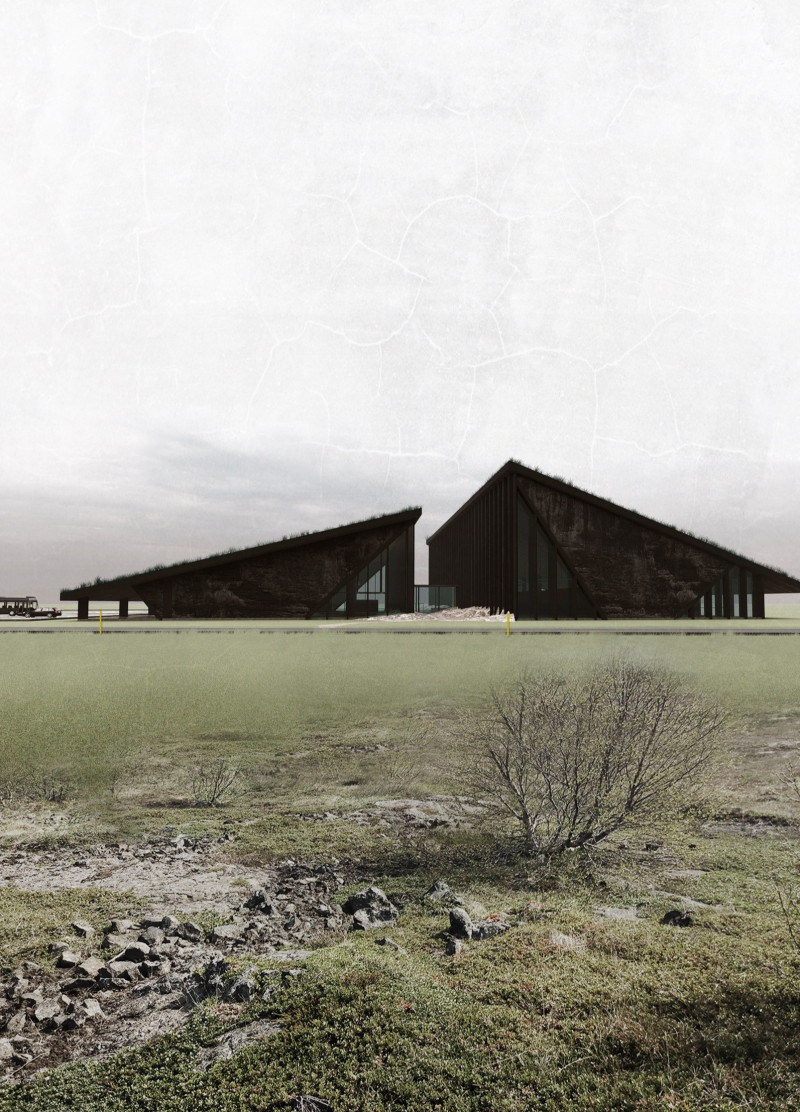5 key facts about this project
The museum features two distinct buildings characterized by a low profile and angular rooflines that mirror the geological forms of the landscape. The integration of natural materials, including local volcanic rock, green grass roofs, glass, and metal, reinforces the connection to the surrounding environment. Each material choice is deliberate, aimed at ensuring durability while creating an inviting atmosphere for visitors.
Functionally, the museum consists of exhibition spaces, a café, an information center, and pathways for outdoor exploration. The layout promotes accessibility and encourages visitor engagement with both the artworks inside and the natural beauty outside.
Local Materials and Sustainable Design
The use of local volcanic rock as a primary material establishes a direct relationship between the museum and its context. This choice not only enhances the structural integrity but also reflects the geological identity of the region. The green grass roofs contribute to energy efficiency and provide habitat for local flora and fauna, emphasizing the project’s commitment to sustainability.
Incorporating large expanses of glass facilitates natural lighting, blurring the boundary between interior spaces and the outdoors. This design approach enhances the visitor experience by framing panoramic views of the landscape, creating an immersive connection to the natural environment. The strategic placement of these glass elements ensures that different areas within the museum benefit from natural light throughout the day.
Engaging with Cultural Narratives
The architectural design integrates cultural elements that reflect local heritage and the history of the region. The exhibition areas are thoughtfully designed to support diverse programming, showcasing artwork that tells the story of the community and the unique characteristics of the landscape. The layout of the café and information center fosters social interaction, encouraging visitors to engage in dialogue about the exhibitions and the site itself.
The pathways connecting the museum to surrounding natural trails invite exploration and provide opportunities for educational programming about the local ecosystem. This not only enhances the educational value of the museum but also promotes the importance of environmental stewardship among visitors.
For a comprehensive understanding of the architectural plans, sections, and design development, the reader is encouraged to explore the detailed documentation of this project. Examining the architectural components and design strategies will provide further insights into how this museum serves as both a cultural landmark and a reflection of its landscape.


























